|
I’m excited to be on Day 3 of a “Real Food Reset!” If you missed the announcement, I am in the middle of hosting a free 7 day challenge. This is something I put out into the Universe to help people refocus on the few things that are still within our control during COVID-19. Every day for 7 days, we’re tracking:
If you missed signing up for this challenge, make sure you get onto my email list so you can be the first to know when I do another FREE challenge like this! What makes this challenge special is that, for the first time, the only real restriction on what we should be eating and should be avoiding is only limited by what meals we can make from scratch. If I want ice cream, I can eat it...but first I have to make it from non-processed foods. Now, I’m certainly not suggesting that we should eat a bunch of homemade ice cream, homemade baked goods, and homemade sugary foods all week. Those are allowed and can be enjoyed but the goal during this challenge is to prioritize home cooked meals built from nutrient dense foods! With this in mind I am encouraging the challenge participants to release all the pressure and expectations they have around their diet and just get back to eating REAL FOODS, just like our great grandmothers ate. THE AGE OF COVID We are currently in the middle of an unprecedented time. The stress that the COVID-19 pandemic has created around the world is most certainly affecting our health. It has been interesting for me to see how my nutrition clients are responding to this challenge. Some of them are attempting to use food as an antianxiety drug by eating all day, and some are forgetting to eat all together due to loss of structure in their daily routine. Either way, goals are being sabotaged! This breaks my heart because when this crisis is over, we could be ahead of where we were when this whole thing started, so long as we feel empowered to make a few good decisions that work to support our long term goals. There was a study published in 2011 that followed 160 non-obese women. These women were asked to report their eating behaviors and emotional state every 2 hours for 10 days. The researchers discovered a few things.
This study is one of many that shows that what we eat can directly affect our mood. And what I’ve noticed the past couple weeks is that some of us have become much less structured with our eating because we’re stressed out. This is precisely the time when we should be supporting our body with everything it needs to create positive emotions and not eating foods that fuel more stress and negative emotions. That is one of the main reasons I included ‘real food meals made with single ingredient items’ as one of the challenges for 7 days. Not only are many of us in a shelter in place and shouldn’t be going out to coffee shops and restaurants for meals, but this is also a high stress time and most of us can use all the help we can get to minimize anxiety and promote positive emotions. YOU DON’T HAVE TO BEAT BOBBY FLAY With this in mind, I wanted to share some of my favorite scratch cooked recipes today. Some of these recipes are quite simple, and some are more complicated to prepare. Even if you are not participating in the 7 Day Real Food Reset Challenge, now is a great time to embrace the spirit of your great grandmother and get back to home cooked meals! If home cooking is new to you, be KIND to yourself! This thing called cooking takes practice. Someone who has never swam freestyle in their life doesn’t expect to jump in a pool and immediately have the techniques and skills to swim with Michale Phelps! And you shouldn’t expect to be Emeril Lagasse either. So get in the kitchen with an open mind and explorative attitude and just try to have fun with it! You will fail a few recipes and that’s okay. Failure is how we learn. Laugh about it. Learn from it. And get right back after it. Who knows, you might find that cooking becomes a form of stress relief over time and who couldn’t use more stress relief right now?!? 1. Sweet Potato and Sausage Breakfast Casserole- This recipe takes time to cook in the morning, so if you like to eat breakfast immediately upon waking, you’ll need to prepare this one ahead of time and reheat it in the morning. Depending on the size of your family, this recipe makes great leftovers! 2. Gluten Free Cinnamon Raisin Bread- Who doesn’t love home cooked bread? And if you are gluten free like I am, finding a good recipe can be very challenging. But I have had success time after time with this recipe. In this recipe, I swap the regular milk for homemade oat milk (to make this dairy free) and also cook mine in my Breville bread maker on the gluten free setting. 3. Vegetarian Power Bowls- If you follow me on social media, you know how much I love making Buddha Bowls. This is the same idea! As this recipe creator states in her blog, think of this as a giant collection of goodness. Roasted vegetables + lean protein + creamy sauce. Usually all things we have left over from a previous meal. YUM! 4. Enchiladas with Poblano-Pork Stuffing & Creamy Avocado Sauce- This recipe requires a good amount of ingredients and a few more steps than normal, but when you are craving dairy free mexican food, it’s worth it! 5. Instant Pot Creamy Butternut Squash + Apple Soup- This is by far one of my favorite pre or post workout soups. It’s easy to drink (no spoon required), has a good blend of protein and carbs, and after a hard workout, it’s easy to digest. 6. Coconut Chia Quinoa Breakfast Bars- Another one of my favorite pre workout bars. These are great to eat before a long bike ride or a big hike! If you are part of the Real Food Reset Challenge, just make sure everything you use only has 1 ingredient on the label. 7. Thai Red Curry Paste- This is a staple condiment at my house. And if you are working on making more foods from scratch, this is a great recipe! The curry paste stores well in a jar in the fridge for 2 months, so make a big batch and enjoy it with your favorite protein and veg combo! 8. Cilantro Avocado Dressing- Great on top of roasted vegetables, as a dipping sauce for kebabs, or on top of your favorite salad! 9. Creamy Lemon Ice Cream- Because sometimes it’s nice to have a sweet treat! I use a local honey from a friends hive (instead of stevia) for this. 10. Instant Pot Coconut Yogurt- For some reason, I avoided home making my own yogurt for years. I thought it would be too hard. Once I finally made my first batch, I was surprised how easy it was. I haven’t looked back since! I use 1 tsp grass-fed beef gelatin instead of the agar-agar flakes. I also use 1 capsule of a traditional probiotic capsule because I don’t have probiotic powder at home. Make sure you break the capsule open and just add the powder to the yogurt. So there you have it! Ten of my favorite FROM SCRATCH recipes that are regulars in my house. Do you have a traditional family favorite you want to share in the comments?
2 Comments
Well...it finally happened. My first Ironman of 2020 has officially been postponed. In a way, I’m happy I finally just know. I sat around for a week watching others get the news that their races had been canceled or postponed, but for some reason, Ironman St. George (originally scheduled for May 2, 2020) remained on the schedule. Even my second race of the season, Ironman 70.3 Santa Rosa (originally scheduled for May 8, 2020 in which I was a swimmer on a relay team) had been canceled. I could tell this uncertainty about Ironman St. George was causing an unlying level of anxiety as every single time I saw I had a new email, I’d lose my breath for a split second wondering if it was the cancelation/postponement email. Now I can stop worrying about when or if that email is coming and just start planning for the next steps. Which brings me to one very important point about planning an annual training and nutrition plan. I brought it up in the very first blog of this series, but I’ll say it again here. Schedules will change. It’s part of life. That is why I always recommend you create an outline for your training and nutrition plan, and fill in the details as you get closer to each phase. This means that you should schedule out your macro and meso cycles, but wait on the details of the micro cycle until closer to those dates. If you don’t know what I’m talking about, revisit the first blog of this series which talks all about cycles HERE. The reason I suggest an athlete take this approach is this: if you had spent hours and hours planning out the finer details of each and every swim workout in January for the entire year, you would be spending another few hours modifying the whole thing! This Coronavirus pandemic was very unexpected and is greatly impacting our ability to train normally. Sure, some of us can go outside for a run and take our bike out for a ride but, unfortunately, there have been full pool closures in most areas around the world. That means, most of us triathletes aren’t swimming for the unforeseeable future. The same example can be seen with your nutrition plan. If you had all the details of each and every meal planned out for the coming weeks, they might all need to change as life throws you curveballs and you have to change up your training and therefore your nutrition too. Given our current circumstances, food right now is hit or miss! I don’t know how the grocery stores looked in your area, but shelves were empty in my town for a while. It’s just not as easy to find our “usuals”. Obviously this created a situation for meal creativity on the fly because half of what was on my grocery shopping list wasn’t available for purchase. My suggestion for creating these plans is to get a rough idea of your schedule, both from a macro and meso cycle. Leave the fine details of the micro cycle for daily or weekly planning instead. Trust me, it will save you a ton of time and headache down the road WHEN things change, because they will. What Do We Do Now? I know this may not fully comfort you but the good news is, we are in this together! All of us are being impacted, mentally, emotionally, and physically due to changes in our race schedule. Personally, 2 of my 4 races for 2020 have been postponed. That means that right smack in the middle of my race specific phase of training for Ironman St. George, I was thrusted right back into my...well...I didn’t really know where I was. With so much uncertainty about when the next race was going to be, I wasn’t sure if I was back in a build phase? Base phase? Pre-season? Who really knows!?! So instead of stressing too much about it, I temporarily put myself into a recovery phase, because that is what felt right to me at the time. Let’s be honest, like so many of you, I was feeling stress from all the uncertainty from COVID-19. Not just with my training, but for my friends and family, my business, my husband's business and my community. It seems like a pretty natural reaction for most people in this situation to say “screw it” and eat whatever they want, whenever they want it. And I certainly felt myself going down that path when all this first started. Luckily, I was able to refocus quickly! Maybe it helped not having my race canceled early on because an Ironman 6 weeks out can certainly keep you focused! But I think it also helped to know that the “screw it” mentality never worked well in the past and typically made me feel worse in the long run! So, instead of allowing myself to go down that path again, I focused on the vision board I created for myself at the beginning of the year. I spent hours looking at my goals and deciding that despite what was happening in this very moment, I still want all of those things. Sure, there are other perspectives I have now, and I certainly plan to add a few things to my goals for the year in response to this viral outbreak, but my goals for 2020 haven’t changed. And throwing 2 sheets to the wind and not taking care of myself is most certainly NOT part of my goals for 2020!!!! And you should feel the same way, too! This is not the time to give up. Instead, this is the time to refocus. I still have so much uncertainty about exactly what I’m doing with my training at the moment so I decided to adopt the recovery style of both training and nutrition, for the time being. There was a brief moment when I thought, ‘gosh, this blog series I’m in the middle of... it doesn't matter right now! It’s not important in comparison to what is happening in the world. I should put it on hold.’ But here is the thing, I really truly believe with all my heart that the absolute best thing we can be doing for ourselves right now is trying to 1. Keep things as normal as we possibly can and 2. Be setting ourselves up to be STRONGER and more resilient for when this is all over. So if you are like me, and you have no idea when you are going to race again, I highly advise that you keep on point with your training and nutrition in a way that sets you up to be AHEAD of the game when you have more certainty about your future. From a nutrition perspective, treating this like a recovery phase of training is EXACTLY what I recommend. So we’re forging ahead and we are going to wrap up this blog series with the details of EXACTLY that...your recovery phase! Recovery Phase Nutrition Plan As we have seen over the last few weeks, a well structured training plan will include progressions through various phases that elicit different and desired adaptations to prepare an athlete for an event. If you have been keeping up on the last 4 blog posts, hopefully you are starting to see that structuring a nutrition plan to shadow your training plan will also help you get better results. Today, we look at the finer details of a recovery phase of training. And since there are (in my opinion) two different types of recovery, I want to first address these from a training perspective. Recovery in training For most of us, we race more than 1x per year. That means that we most likely will not cycle through a pre-season, base, build, race specific and recovery phase of training in its entirety multiple times per year. Instead, we would likely start off the year in pre-season, then create a base, then cycle through the build, race specific, and recovery phases of training over and over again until our last race is completed. After that last race, the recovery phase will likely be longer, and hopefully the training will look MUCH different than the recovery week(s) you have mid-season. Mid-season Recovery Mid-season recovery for training should last approximately 1-3 weeks. During this time, it is likely that you will continue to practice your sports details. If you are a triathlete, you will likely continue to swim, bike and run. However, these will be done at much lower intensities and with much less volume than during the other phases of training. It is also very likely that you might throw in more recovery days, which can be complete days off, or active recovery days where you practice yoga or some other type of low level restorative sport. Postseason Recovery Postseason recovery for training looks much different than mid-season recovery. Here, it is suggested by most coaches to take a break from the monotony of the sport you have been repeating over and over again, day in and day out for months. Instead, it is usually encouraged to adopt a different sport. One that still keeps you fit, but gives you both a physical and mental break from your main sport. If you are a triathlete or a runner, maybe you adopt a cross country skiing routine. If you are a road cyclist, maybe you dust off the mountain bike and spend some time on the trails. Depending on how eager you are to get back to training, this is also a time for athletes to manage any imbalances that their sport can create. For many endurance athletes, this is dealing with the posterior chain. So this can also be a time to hit the gym and build back some strength in specific areas that may have been neglected over the past few months. However, remember that pre-season and base training phases call for strength training so you don’t have to go all out while you are in recovery. Recovery Nutrition
From a nutrition perspective, regardless of which recovery phase you are in (i.e., mid-season or postseason), I highly encourage athletes to also ‘take a break’ from a structured nutrition program. That doesn’t mean eat french fries and ice cream every day. Instead, I encourage athletes to follow an unstructured, high quality diet that follows the 80/20 rule. 80% of the time you continue to eat nutrient dense whole foods that are mostly plants. 20% of the time, you allow yourself to “indulge” in foods like french fries and ice cream. But high quality ones! Instead of driving through a fast food joint that uses hydrogenated oils that cause a whole bunch of inflammation in your body, why not purchase organic potatoes, and cook your own fries in an air fryer? There are great recipes you can follow online so use this time to explore and get creative in the kitchen!. The glory of making them from scratch at home is you get to control the ingredients. With less training on the schedule, you should have extra time to spend in the kitchen creating these fun treats for yourself without using ingredients that are harmful to your body. Personally, I love ice cream so I go ahead and make my own! Check out this recipe for a dairy free Almond Joy ice cream made without refined sugar! It’s too easy to not do! Regardless of what your “indulgence” is, the point is that you are enjoying them 20% of the time compared to the little to no intake during your other phases of training! Macronutrient Ratios During Recovery During a recovery phase, I don’t recommend following a specific macronutrient ratio. Remember, this phase is about taking a break!!! That means you shouldn’t be weighing and measuring food either. Your mind needs a break from so much structure, so take it and enjoy it! If this makes you nervous, don’t be. As long as you continue to move your body daily and eat mostly plants, moderate amounts of quality proteins and fats for 80% of the food you put into your body, the likelihood of your body composition changing too much is low. At the end of the day, recovery passes by quickly!! If you are in a mid-season recovery phase, you are looking at 1-3 weeks max before you jump back into either a build or race specific phase of training. If you are in the postseason, again, this phase will typically only last 3-8 weeks before most athletes jump back into some style of pre-season training. So rest assured that if you focus on the 80/20 approach, the amount of damage that can be done, if any at all, is negligible. Wrapping It All Up! So there you have it. All the details you need to create an annual nutrition plan to help you reach your health and performance goals! If you are just hopping in on the series, make sure you go back to read the rest of the articles which cover the other phases of training: Base Phase Build Phase Race Phase I know many of you are still grasping the reality that your race was cancelled or postponed. Go ahead and be sad, mad, frustrated! Feel those emotions without the guilt because you have been working hard and it sucks to have something ripped away from you! But then remember, that how you respond to these weird times is all in your power! You can choose to be upset and give up, or you can choose to be upset and then wipe away the tears and refocus! On the bright side, you have just been given a chance to go back and improve on yourself. And if you take that opportunity, you may end up doing even better than you expected to have done if your race had still been on! If you have questions or want some help putting a nutrition plan together, or if you are confused as to what you should be doing as a result of a race cancellation or postponement then do not hesitate to reach out to me! Creating training and nutrition plans is what I LOVE to do! So if you don’t love it, I’m here for you! Whew! We’re doing this! We’ve made it through a series of blog posts already that have covered how to build an annual nutrition plan and the finer details of the nutrition requirements for base training and a build phase of training. I am so excited to jump into the weeds today on the most exciting phase of all...race specific training and nutrition. It’s the most exciting because this phase encompasses the actual race itself! What’s not to be excited about that!?! Before we jump into exactly how you should be eating in this phase, let’s first discuss both the goals and the typical training in a race specific phase of training. WHAT ARE YOUR GOALS DURING THE RACE SPECIFIC TRAINING PHASE? During this time your main focus is on the following:
HOW LONG DOES THIS PHASE LAST? The race specific training phase typically starts anywhere from 4-8 weeks prior to your main event. This time frame depends on many things, including your experience in the sport at that specific distance, your prior training load, and how quickly your body responds and recovers from the stress that race pace efforts can create. Everybody is different. Some people respond and recover quickly. Where other athletes need more time to slowly build to these race efforts, and require more time to recover as well. It’s important you listen to your body and work closely with your coach to find out what the right amount of time is for you! If you are training for a race without a coach and feel like you need some guidance on this, reach out to me! I’m happy to set up a free discovery call to help you fine tune your taper. The race specific training phase is building on the previous training phases before it, both base training and build training. In those phases, we have built up our endurance engine to be able to handle a larger amount of volume. Once we are nearing our key event, we transition to the race specific phase of training and begin to get more specific to the demands we will face during our event. Workouts will likely include race day efforts with short periods of rest between sets. This is also the training phase where athletes can and should consider other stressors they may encounter on race day and prepare for them. An example of this is temperature. If you are planning to race in a hot and humid environment, doing some heat training, or regular sauna sessions leading into your event can help your body be more prepared for that stressor. OKAY, NOW ONTO THE FOOD! From a training nutrition perspective, during the race specific phase, you are mostly executing the plan you developed during your build phase. In that phase, you tested multiple types of nutrition to discover what works and what doesn’t. You also tested how much is too much, and how much is too little. Now you know which foods you can tolerate, and in what amounts. In the race specific phase, it’s all about practicing. There should be no new food introductions or tests done! Come race day, your food should be the least stressful part! This is because, if you follow the suggestions I’ve laid out for you for training, you will know your nutrition plan like the back of your hand. That way, as other things arise (which they will), you have the mental space to manage those without faulting on your nutrition plan. So don’t change much now, just make sure you have what you need in place to spend these few weeks before the race practicing your plan. PRE-RACE MEALS The main difference from a training nutrition perspective in the race specific phase is your need to practice your pre-race meals. Many training programs call for race style simulation training days. One of these days, you can and SHOULD also be testing your nutrition exactly as you have it planned out for race day. This means you practice your pre-race meals too! So what would this look like? The night before your biggest training day, you consume your planned pre-race dinner and then go to bed early. Wake up at your planned wake up time for race day. Eat the breakfast you plan to eat on race morning. Drink all the things you plan to drink race morning, and then start your race simulation training day at the same time you would start your race. Over the years, I have found 2 main pre-race meals for the night before the race that work best for me:
If I have access to a kitchen, I will almost always make the risotto! Yes, risotto is made from rice which might be surprising for you. But I have tested how my body responds to rice and it does great every time. The homemade bone broth in the risotto is rich in minerals and L-Glutamine (the most abundant amino acid in our muscles). And I always make enough to eat for breakfast on race morning. I usually dilute the race morning portion with extra bone broth and eat it more like a soup. I love it. Do you have to do it exactly as I do? Absolutely not! You need to find what works for you! Maybe it’s chicken risotto. Maybe it’s salmon and potatoes. You won’t know unless you test and testing happens during the build phase. Whatever it is, you want to find something that you enjoy and satisfies you but doesn’t spike your blood sugar, causing you to wake up in the middle of the night hungry. I typically eat a small breakfast on race morning about 3 hours prior to race start. This is either leftover chicken risotto soup, or gluten free bread with almond butter, or a smoothie with sweet potato, coconut milk and a clean protein powder (link Equip Prime Protein HERE). IN THE KITCHEN One thing to note is that while WHAT you eat should stay mostly the same, there will be slight variation in quantity as you get closer to your event. As your intensity and volume decreases, so does your caloric need. BUT THIS DOESN’T MEAN YOU GO ON A DIET! You still need to eat enough calories to sustain your energy expenditure. Instead, be mindful of your activity levels and meals. If you have rest days, you may not need to be loading up on starchy carbs on those days. You also may be able to cut your caloric intake down by a few hundred calories per day. This might look as simple as eliminating a snack between meals, or cutting your portions down slightly at each meal. Nothing major! If your early morning training session is easy, you may be able to do this fasted again (like you did in the base phase). The key here is to listen and watch your body. The last thing an endurance athlete wants to do is put on weight in the weeks leading into an event. So if your clothes start fitting more tightly, be aware and make slow and purposeful shifts to your diet to maintain energy and body composition. THE IMPORTANCE OF NUTRIENT DENSE, REAL FOOD MEALS (INCLUDING CARBS!) On the flip side, you also don’t want to be malnourished coming into your key event of the year. So keep up with regular meals that are built with nutrient dense whole foods and avoid snacking on foods that are void of micronutrients. If you love tracking macros, I highly advise you to continue to eat your calories in a 40% carb, 35% fat and 25% protein ratio. Even though you will be cutting your training volume and intensity 1-2 weeks before your main event, there is recent research that shows that the gut is trainable. And since we will be consuming mostly carbohydrate during our race, we need our gut to be capable of uptaking those carbs when we need it. One study showed that exogenous carbohydrate oxidation rates (i.e., how quickly our body metabolizes carbohydrates that we eat) were higher after consuming a high-carbohydrate diet for 28 days compared with a low-carbohydrate diet. This tells us that if we eat carbohydrates for a period of time, our body is better able to utilize them. Thus providing evidence that the gut is indeed adaptable and this can be a useful tool to prepare the gut for the reality of increased carbohydrate consumption on race day. So, although our training may not dictate the need for high carbohydrates in the week or two leading into a key event, making sure that the gut is adapted to absorb the carbohydrates on race day is still needed. Therefore keeping your carbohydrate intake around 40% of your caloric intake, and instead decreasing your caloric intake to match your energy expenditure is advised in the weeks leading into an event. “NEVER TRY ANYTHING NEW ON RACE DAY” There are certain types of foods that you can place a greater focus on that can support race phase training, allowing you to arrive on race day as ready as you can be. Foods high in nitric oxide:Nitric oxide is the nutrient required to help open up blood vessels and carry oxygen through the body to the muscles! Some great options: beet root, garlic, grass-fed meat, dark chocolate, leafy greens, citrus fruits, and pomegranates! Foods high in L-glutamine: L-glutamine is an amino acid (ie., a building block for proteins). It is great for immune system function and supports gut health! Some great options: bone broth, meats, fish, dairy (if you can handle it), eggs, beans, beets, cabbage, spinach, carrots, and kale. Foods high in fiber: specifically, I’m talking about cooked vegetables, like leafy greens, as they are typically easier on the digestive system. Fiber is fantastic for keeping your gut healthy and supports overall health! Caffeine: just stick to coffee here! Test this on your longer workouts and enjoy some on race morning. Caffeine is a natural stimulant that has been proven to help with cognitive function and sharpness! Additionally, in a race specific build, it is more important than ever to make sure you are prioritizing sleep and proper hydration. These 2 factors can help keep your immune system stay strong as you taper into your main event. IT’S RACE TIME!
By the time you hit this point of your training, most of the work has been done. Not only have you built up your training, but you have also tested multiple aspects of your nutrition strategy and now you get to just practice, practice, practice! The time you spent planning out your nutrition and training in the prior phases can now be spent planning out the finer details for your race weekend. And sleeping. Did I mention that this is a great time to sleep more. ;) Congratulate yourself for getting through your pre-season, base training and build training to get here. Getting to the start line healthy and ready to race is a HUGE testament to how well you planned and executed your training and nutrition strategies. And if you are reading this as you are getting ready for your training season and feeling overwhelmed, then you may need some support and guidance. Especially if this is one of your first races where you are taking your training nutrition seriously! If you are curious how I can help you, we can hop on a discovery call where I can answer any questions you have and tell you all about how I work with clients to help them get results. If we feel like we are the right fit for each other, then we can get started on your plan right away! Welcome to part 3 of a 5 part series on building an annual nutrition plan to reinforce your annual training plan. The whole goal of this series is to help you understand how to create and implement your own nutrition plan so that you get the most out of your training. Because the reality is that what you eat when you train can either help you or hurt you! If you are going to dedicate hours each week to a sport you love which takes time away from your friends, family and other important things, let’s make the most of all that time. Deal? If you missed the previous 2 posts on building an annual nutrition plan and the details on how to build and execute the nutrition piece during base phase of training, I recommend you spend some time reviewing them. This week, I am excited to jump into the ins and outs of your build phase! Before jumping into the ins and outs of the diet side of things, here is a little information on what the “build phase” is all about when it comes to training. BUILD PHASE In the build phase of training, you are doing exactly that...building! This phase involves an increase in both volume and intensity with a subsequent increase in your energy requirements (i.e., calories!). The main goals in build phase are:
The build phase can last anywhere from 8-16 weeks, depending on the length of your event. After the build phase, you move into a race specific phase. Now that we’ve loosely defined how the training might look during a build phase of training, let’s jump into the details of the nutrition piece. NUTRITION DURING A BUILD PHASE In this phase, since your distance and speed increase with training, so do your energy requirements. That means that you need to increase your caloric intake from one (or more) of your macronutrients (carbs, protein and/or fat). Before we talk about which one(s) and by how much, let’s talk about how your body utilizes each macro during training and racing so you can make a better informed decision about how to adjust your daily meals. CARBS VS. FAT There are plenty of ‘nutrition experts’ on the internet that scream that LCHF is the only way to go! All day, every day! On the flip side of the coin, we have ‘scientific experts’ who argue that for over 50 years science has proven that we have to carb load in order to be good athletes. It gets confusing so I totally understand you wanting to say “whatever” when it comes to your training nutrition! So who’s right? Well...if you are an endurance athlete, partially both. In order to create energy (or ATP) during exercise, our skeletal muscles can either use fat OR carbohydrates. The rate of intensity (i.e., how hard you are working!) of the work you are performing is what determines whether fat and/or carbohydrate will be used to generate that energy. The harder you are pushing, the more carbohydrate is being used to create ATP. The easier you are working, the more fat is being used to create ATP. So let’s translate this to training:
If you end up eating mostly carbs during your base phase,the body will turn that carbohydrate into fat and either store it or use it. Which typically is NOT a goal for an endurance athlete! Alternatively, if you are eating LCHF during your build phase, you are risking muscle catabolism (aka- your body burns muscle for energy) and/or you can’t push the paces you are trying to push (aka- you bonk). Both scenarios are bad! And this is PRECISELY why I advocate for periodizing your nutrition plan! There is a time in an athletes season when eating a LCHF diet is important (BASE phase). This allows them to burn mostly fat and not store any extra body fat. There is also a time in an athletes season when it is crucial to start introducing more carbohydrate into the diet, at appropriate times, to improve recovery, speed and endurance (BUILD AND RACE phases). IN THE KITCHEN If you follow my recommendations for nutrition requirements for the base phase of training, then you should be eating a LCHF/ketogenic diet. Once you are ready to transition your training into the build phase (which is marked by an increase in volume and an introduction of higher intensity), it’s time to adjust your macros! Just like in the base phase, you can make these adjustments by tracking in a calorie tracker online, or you can use a 3 compartment container to help you create correctly portioned meals quickly. I found these Eco One BPA-free 3 compartment portable Bento Boxes to be a lifesaver for this phase of eating! It takes the weighing and measuring out of the equation and all I need to do is fill the large section with low starch, high fiber vegetables, fill one of medium compartments with a single ingredient starch (like sweet potato, rice, quinoa, black beans or corn), and the other medium compartment with protein. I either add 1 tbsp of quality fat to my vegetables or starch, or make sure I am using a high fat piece of protein to meet my fat requirements (for example: chicken thighs!). I recommend athletes eat either 3 or 4 of these containers per day, depending on their energy needs. If weighing, measuring and counting macros is your thing, then it’s time to adjust your macro ratios in your online program. I suggest shifting your macros to a ratio of 40% carbohydrate, 35% fat and 25% protein (versus 10% carbohydrate, 70% fat, and 20% protein!). In addition to adjusting your macros, you will also need to increase your caloric intake to match your energy demands since they will likely also increase. This shift in eating can feel quite shocking at first! Going from 10% of your caloric intake from carbs to 40% of your caloric intake in carbs can take a few weeks of getting adjusted to. This is why I am a fan of athletes tracking their intake for at least a few weeks during the transition and until this way of eating feels more natural or comfortable. A CAVEAT ABOUT INCREASING YOUR CARBOHYDRATE INTAKE As I mentioned before, the build phase of nutrition is when you increase your carb intake but it must be done at the appropriate time so that it actually supports your performance! I highly recommend that you eat the majority of your carbohydrates around and during your training. This means that if you only have 1 training session that day and it’s happening at 5pm, you may want to forgo the carbohydrates in your breakfast. Instead, you would eat vegetables, quality fat and protein for breakfast, then consume your meals with carbohydrate both before and after your evening training session instead. If you have 2 workouts per day that are both fairly long and/or demanding, you will likely need to add carbohydrates to every meal to meet the energy demands of 2 workouts. Additionally, the carbohydrates you consume after your morning session will help you recover for your evening session! MEAL PLANNING TIP Shift your focus from training to eat to eating to train. Preparing for an event takes more than physical training. How you fuel your body matters and it’s important to prioritize your nutrition! This means that you need to plan your meals AHEAD of your training sessions so you optimize your meals at the right times. There are no “last minute meals” during training season! So just like you would review your training sessions for the week and make sure you are prepared for them, you should also have a weekly menu in place so you have a general idea of what you will be eating, and when. Finishing a morning session and not having a plan for what you should eat to optimize your recovery is only going to leave you eating junk, or sometimes worse, not eating anything at all. NUTRITION DURING TRAINING Although the length of training plays a role, during base phase you are likely not consuming race food during training as your requirements are much lower. However, since the build phase is setting you up for race day distances, it is the perfect time to TEST, TEST, TEST! Start introducing various “race food” options into your longer sessions (i.e., the nutrition you will be taking on hand with you for race day!) Some options that I’ve seen work well include:
Additionally, a mixture of simple and complex carbohydrates can lead to better and higher absorption of those carbohydrates from the gut into the bloodstream giving you more energy to utilize during the race! The goal here is to learn two things:
I recommend my athletes start longer sessions in the mornings in a fasted state. Often, I find, athletes will eat a breakfast to avoid consuming food during their training which is the complete opposite of what should be done for longer sessions in the build phase. When you don’t eat anything prior to a longer training session, it forces you to start testing your race foods within the first hour of training. image from Skratch Labs RACE DAY OPTIONS
Build phase is also the time to test the nutrition that the race will have on course. You may not be planning to use it, but if you drop your nutrition, or your special needs bag gets misplaced, or your crew doesn’t arrive when/where you think they should, you may need to know if eating the on course nutrition is an option or not. I also recommend trying multiple different foods! Just because you found 1 food you like doesn’t mean you shouldn’t find 3, 5, or 10 more. At the end of the day, finding what works best for your body is all about experimenting during the build phase! Many athletes do very well with 250 calories per hour, but it’s not about them… it’s about YOU! You might find that you can tolerate 350 calories per hour and feel better at that level! The only way to know is to test, and build phase is the time to do that. Once you hit the race specific phase, testing should be over. More on this in my upcoming blog, so make sure you check back to get all of the details on how you can fine tune your race phase nutrition plan to optimize your results! ONE LAST NOTE ABOUT MINDSET Build phase is often the phase when I tell athletes “it’s GO time!” . That means that the priority has shifted to making athlete gains, and not so much on making body composition changes. So if you are wishing you could still lose more body fat, or gain more lean tissue, the build and race phases are NOT the ideal phases for this focus. Your training intensity and duration increases as does your energy intake, so while this may result in body composition changes naturally, it is NOT the priority! This can be hard mentally for athletes, especially when they look in a mirror and don’t love what they see. Work hard to change the language in which you speak to yourself and know that the time will come again when you can refocus your efforts on making body composition changes after your event. Plus, those changes may result in your PR so it’ll likely be worth it! Have an event coming up or in the near future and want to dial in on your nutrition plan? Let’s chat! Click here to schedule your free discovery to get you started on your journey to your best race yet! I want to spend the next few weeks outlining a typical annual nutrition plan (ANP) to correspond with your annual training plan (ATP). In the last blog post, I did a 10,000 foot overview on why you should consider building an ANP and how to get the general skeleton of one designed. For the next few posts, I’m going to dive into the details of each phase from a nutrition perspective so you can start plugging in the details of your plan and TAKE ACTION. Base Phase Nutrition Planning In order to build a successful base phase nutrition plan, one must consider their actual training plan first. The “base phase” is what comes after your “off-season” and before your “build phase”, both of which I will dive into in future blog posts. Not all coaches call this phase “base phase” and most stock plans that an athlete purchases online won’t include one. So getting clear on what the “base phase” is, is important! The base training phase for each athlete is going to look a little bit different depending on their own specific schedule, goals and skills. But generally speaking, and depending on how long your event is (i.e., a sprint triathlon or 5k vs an ironman or marathon) this phase lasts about 8-12 weeks long. You know when your base phase starts by counting backwards from your first key race or event by approximately 24-28 weeks. In this phase, the three main goals are:
NUTRITION FOR BASE PHASE For any athlete who’s primary sport requires them to keep moving for more than 90 minutes, doing a basic low carbohydrate, high fat (LCHF) diet is recommended during the base phase. Ideally you would get yourself into ketosis for a few weeks during this phase. LCHF vs. Ketosis Although some people tend to think they are the same, there is a difference between eating LCHF and getting yourself into ketosis. In fact, there are plenty of people out there who follow a LCHF diet who are NOT in ketosis. And there are some people who can tolerate eating a moderate amount of carbohydrate and still stay in ketosis. So what is the difference? The most notable difference is that a ketogenic diet is actually measurable and is defined by the production of ketones, whereas a LCHF diet is not. A ketogenic diet is one in which your body favors burning fat (over glucose) as a fuel source. The byproduct of burning fat is a ketone body (produced in the liver). These ketones float around in your bloodstream and can be measured by a device similar to a glucometer (such as this one). To create a situation in which your body favors burning fat over burning sugar, you need to follow a clean ketogenic diet, at least initially. But exactly how low carb you go is completely dependent on your body. Some people can get into a state of fat burning and ketone production with 50g of carbs per day, whereas some people need to eat closer to 30g of carbs, and some people can tolerate much more, sometimes upwards of 100+g of carbs per day. It doesn't really matter how many carbohydrates you eat on a ketogenic diet AS LONG AS YOU ARE PRODUCING KETONES (as measured by a ketone monitor!). If you are measuring your level of ketones on a device and seeing a positive reading, then you are burning fat! The device I prefer to use is the Keto Mojo. This device is affordable, quick and accurate. It does however require a prick of the finger for a very small drop of blood. If pricking your finger isn’t your thing, your other option is using a breath ketone meter. However, I will tell you that - as of this posting - I have yet to see the reliability of these meters compared to a blood spot test. image from: fatforweightloss.com You can also purchase urine ketone strips that will tell you if you are excreting ketones in your urine. This can be helpful for the first few days of transitioning your body from a sugar burning state into a fat burning state, but after that, you will get false readings. Why? Because when you first start dropping your carbohydrate intake and your body starts burning fat and producing ketones, the body’s tissues don’t know how to upregulate the ketones. Since the liver is producing them, and the tissues don’t quite know how to use them, they will be excreted through the urine. Eventually, the tissue gives up hope on glucose and starts learning how to use ketones for energy. Once this happens, you should no longer be wasting ketones in your urine which means you will stop seeing positive results on the urine ketone strip. Although this can be frustrating at first, it is a sign that your body is USING the ketones rather than wasting them and this should be celebrated! It is at this point that you need to switch to either a blood spot test or a ketone breath meter to get a more accurate picture of your true ketone level. Why does burning fat matter for endurance athletes? I thought we were supposed to burn carbs! Most of you endurance athletes out there have probably been educated to “carb up” to ensure you have fuel for training and events. So, why should you care about burning fat instead? And, what if you don’t have body fat you want to lose? Both are GREAT questions! The reason why becoming fat adapted (i.e., your body burns fat for fuel) is key is because the more fat your body burns, the less reason you have to obtain your energy from exogenous sources like gels or goos to be able to perform at your peak. The body can only store approximately 1,400 - 2,000 calories worth of carbohydrate. That means that you only have about 90 minutes worth of energy stored as sugar in your liver and muscles. So if your event is going to last longer than that, you will need to get more energy from somewhere! And that somewhere is typically gels and goos! It may seem harmless, and sure they give you “energy” but many of us also struggle with GI distress due to our consumption of these so-called “foods”. On top of that, when we eat anything, our body shunts blood away from other areas of your body (i.e., working muscles!) so that it can focus on digesting. That means you are taking away precious energy from the muscles you are using to crush your event! On the other hand, even a lean athletic body has approximately 50,000 - 80,000 calories stored as fat! The FASTER study, published in 2012, showed that after 20 months of following a LCHF diet, ultra endurance runners had a fat oxidation rate (i.e., the rate at which your body burns fat for fuel) that was 2.3x higher than that of the standard high carb athletes. And when you consider that fat has twice as much energy available than carbohydrates (and protein), I’ll take fat burning over sugar burning for low intensity exercise ANY DAY! So how does that actually look in your kitchen and while you are training? IN THE KITCHEN You can make this as complicated or as simple as you want to make it. Let’s start with simple which is my “3-2-1 Rule”. Depending on your caloric needs, you would build a plate that includes 3 servings of high fiber, non-starchy carbs (such as dark leafy greens, cucumbers, broccoli, artichokes, bell peppers, etc.), 2 servings of healthy fats (such as avocados, nuts/nut butters, oils, and fats included in protein you eat), and 1 serving of quality protein! 1 cup of high fiber, non-starchy carb = 1 serving 1 tablespoon or the size of your thumb = 1 serving of fat The size of your palm = 1 serving of protein I highly recommend that you work towards eating most of your meals in an 8 hour window and avoiding snacking between these meals. That might mean that you eat your first meal at 10am, eat again at 2pm, then your final meal at 6pm. You would then drink nothing but clear liquids (like water, herbal teas and black coffee) from 6pm until 10am the next morning. This gives your body a break from being in the fed state all the time and allows it to tap into stored energy. Since you aren’t eating a lot of carbohydrates in the form of starchy tubers, grains, breads, pastas, fruits or other high sugar foods, your body will start looking at stored fat for energy. Eating within a short eating window will help you get ‘fat adapted’ more quickly. However, you need to be realistic with what your life requires of you because the last thing you want to do is undereat because you are limited to a particular feeding window! It is still important to consume your body’s energy requirements from your daily meals. Tracking Macros On the more detailed side of things, you can actually track your macros using an online program like Cronometer or MyFitnessPal. I think tracking your macros is a fantastic way to learn what you are eating and how much. If you have never done it before, you should! On the contrary to what most people think, what I find is that many of my clients under eat and they don’t learn how little they are actually eating until they start tracking their macros. Under consuming calories on a regular basis is a great way to wreck your metabolism. No one wants that. As informative as tracking may be, it is time consuming and tedious, especially if you are eating food without labels, which I HIGHLY suggest you do! Therefore, my recommendation is to track your macros for a given period of time. I suggest 1-2 weeks which will give you an idea of what you are putting in your mouth, in what ratios, and the types of adjustments you need to be making to meet your energy needs. Macronutrient Ratios During base training, to support your body’s transition to burning fat, I recommend starting out with a macronutrient ratio of 20% protein, 10% carbs, and 70% fat. Fiber is incredibly important to a healthy body, so make sure you are still getting the recommended daily fiber intake of 25-30g daily. Some of my favorite low carb fiber foods are: chia seeds, ground flax meal, marinated artichoke hearts, avocados, nuts and seeds. Remember, you don’t HAVE TO track. You can keep your daily eating simple by just following the 3-2-1 rule with all of your meals! DURING YOUR WORKOUTS Since your base phase is all about building an aerobic (remember, WITH oxygen) endurance base, you shouldn’t be doing any training that gets really intense and you shouldn’t get out of breath for too long! At this lower intensity, you will be hanging out in your fat burning heart rate zone during training. Most of the endurance training sessions in base phase last less than 4 hours in length. If you stay true to this style of training, this will also help you get ‘fat adapted’ more quickly! Since you have plenty of stored body fat, you can also go longer periods of time during training without needing to put in a bunch of calories. For training that is less than 90 minutes long, I recommend sticking with pure water and electrolytes (making sure that the electrolyte mix does NOT have sugar in it). That’s it! A simple way to get electrolytes without all of the other junk found in some drinks, I recommend adding a pinch of unrefined sea salt to your water. As soon as you are done with your training, and you start feeling hungry, go ahead and eat a real food meal that is LCHF. For some people, this is immediately following training. For others, this can be hours after training. The idea here is that you follow your body’s signals on this one. Eat when you are hungry, don’t when you aren't. The exception to this rule is after strength training, in which you should aim to get a real food meal that is rich in a quality protein that has a complete amino acid profile within 1 hour of finishing your training session. If your training is longer than 90 minutes, but less than 4 hours, consider using liquid calories. Something like Tailwind or Skratch Hydration are my suggestions. Both have electrolytes mixed in and offer some carbohydrates to help get you through the longer session. At the 90 minute mark of your session, slowly start consuming the liquid calories. The goal is to SLOWWWW drip in the calories until you finish your session. For most athletes, getting about 100-200 calories in SMALL SIPS per hour is enough! But you are you. You might need to play around with the amount of calories you need to help you get through a session without bonking but not overdoing it either. One great sign to look for that indicates that you might be under eating during training is a rapid decline in both your energy and mood. If your training session was enjoyable and fairly easy, and then all of a sudden it’s not anymore, this is a sign that you are low in calories. Aim to consume a little bit more per hour during your next session. You might be over eating during your training session if you feel full all the time, aren’t eager to eat, or you get kicked out of ketosis and can’t get back in for a few days after training. If you load yourself up on carbohydrates during your base phase training, you can easily knock yourself out of ketosis which defeats the entire goal of becoming a better fat burner. During base training, I recommend starting with less calories per hour and slowly increasing the amount as needed. You can always eat more if you find your energy levels drop, but you can’t take calories away once you’ve eaten them. If your training is longer than 4 hours, it’s likely that you’ve moved in “build phase”, which I will be going into greater detail on in a separate post for stay tuned (and if you’re not already, subscribe to my email list so that you don’t miss it when it comes out!) From Base Phase Training to Build Phase Training
Since the base training phase lasts approximately 8-12 weeks, you should spend the same amount of transitioning your body to burn fat for fuel! In the next post, I am excited to talk in more detail about how to transition from nutrition in base training to nutrition in your build phase. We’re going to hit on how to carb test, carb cycle and how to eat to fuel your harder and longer session. I can’t wait! In the meantime, if you need a step-by-step guide on how to burn more fat during your base phase, download my free ‘5 easy steps to burning fat as fuel’ on my website! REFERENCES:
|
AuthorTiana Rockwell is a certified nutritional therapist, avid endurance athlete and dark chocolate lover. She believes that by eating REAL food, we can balance our body and reach optimal health and wellness! Archives
May 2022
Categories
All
|
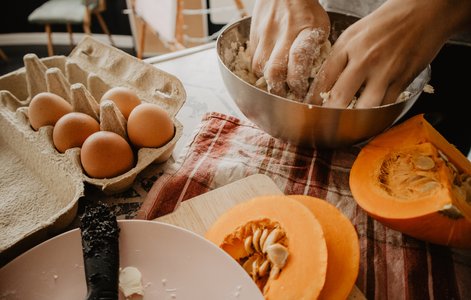




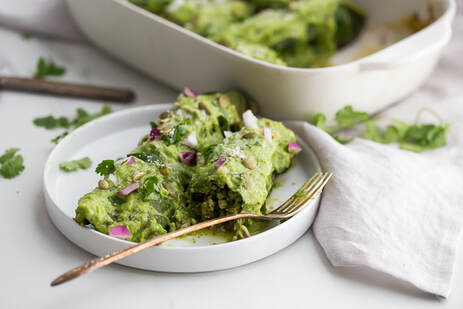


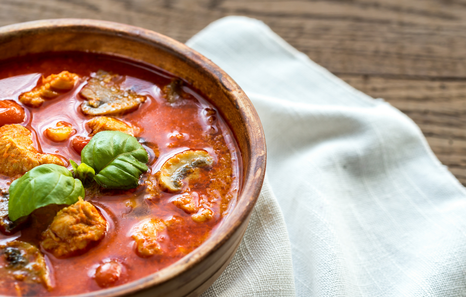
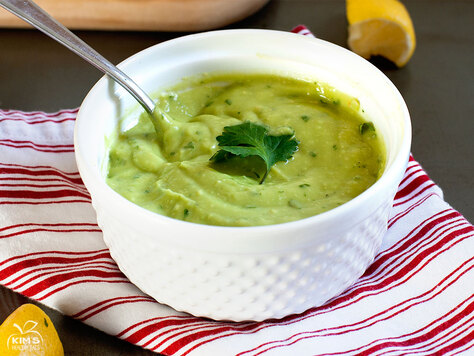



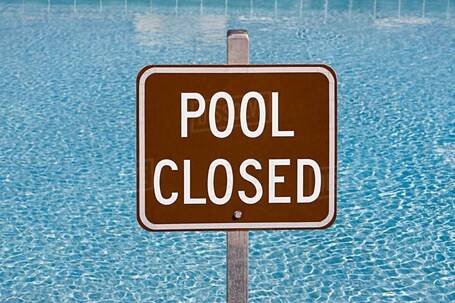
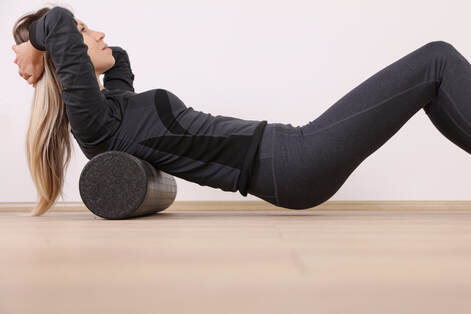


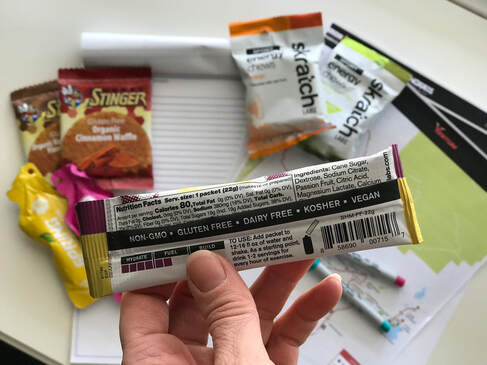

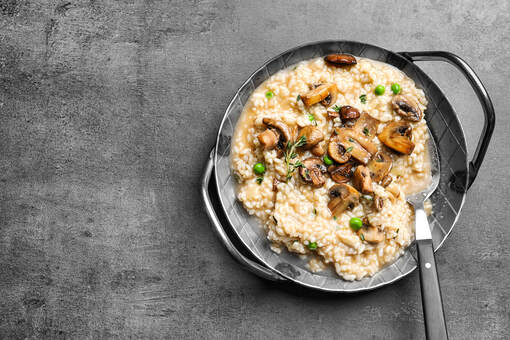




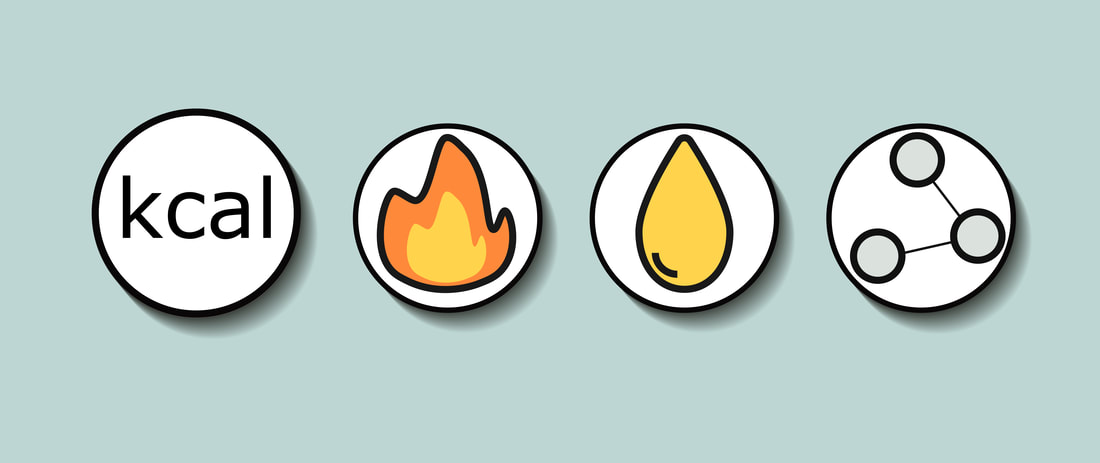







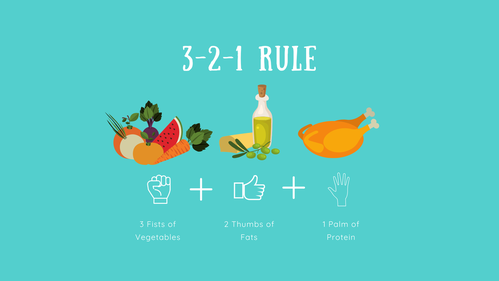


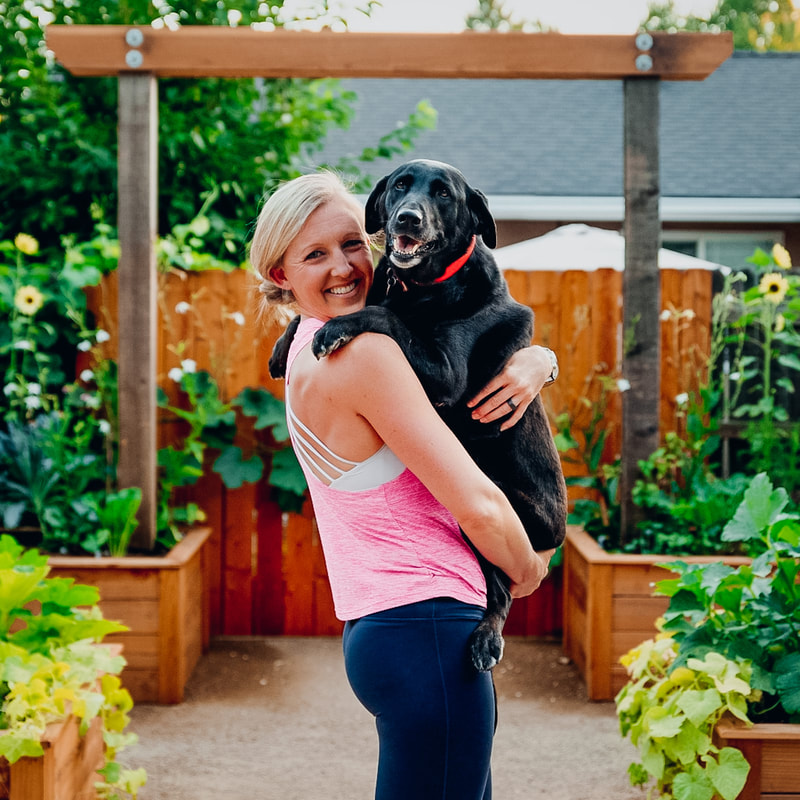
 RSS Feed
RSS Feed